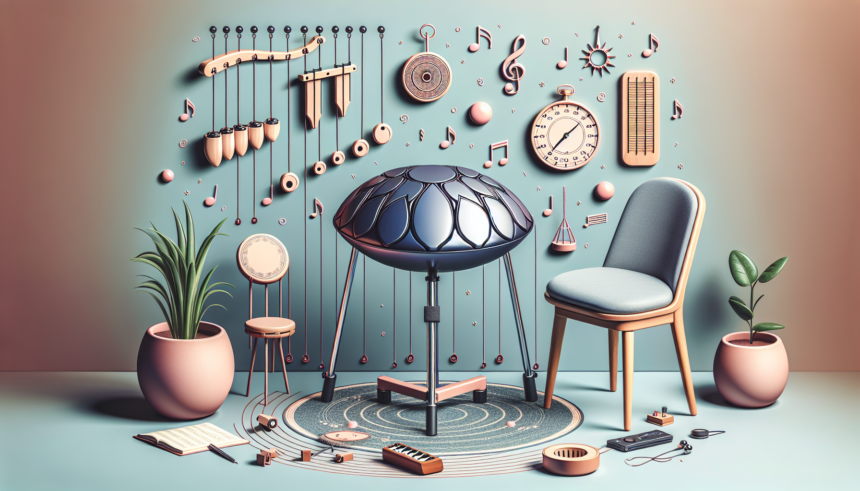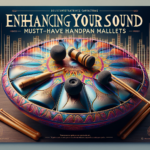For handpan players, the joy of playing transcends into long hours of creating harmonious and soothing music. However, while the handpan beckons, achieving comfort during these extended play sessions can be challenging. This is where ergonomics and the importance of a good handpan stand come into play. Mastering the art of playing the handpan comfortably ensures that musicians can enjoy their instruments without experiencing discomfort or injury.
Understanding Ergonomics
Ergonomics is the study of designing equipment and devices that fit the human body, its movements, and cognitive abilities. The primary goal of ergonomics is to optimize performance and minimize discomfort, thereby encouraging sustained, efficient, and safe interaction with technology. When applied to musical instruments, ergonomics seeks to prevent strain and injury, providing a more enjoyable and enduring playing experience.
Common Ergonomic Concerns for Musicians
For musicians, including handpan players, the following are common ergonomic concerns:
- Posture: Maintaining a neutral, balanced position to avoid strain on the muscles and joints.
- Repetitive Strain Injury (RSI): Injuries caused by repetitive motions or prolonged, awkward positions.
- Instrument Weight: Managing the weight and balance of the instrument to prevent fatigue.
- Height and Reach: Ensuring that the instrument is at a suitable height and within comfortable reach.
Importance of a Good Handpan Stand
Handpan stands are essential tools for achieving ergonomic benefits while playing. A suitable stand helps in the following ways:
- Optimal Height Adjustment: A good stand allows the handpan to be positioned at a height that suits the player’s sitting or standing posture, preventing bending and slouching.
- Stability: Ensuring the handpan is securely placed, reducing the risk of unwanted movement or falling.
- Portability: Lightweight and foldable stands enable handpan players to take their instruments anywhere without hassle.
- Adjustable Angles: Some stands offer the ability to tilt the handpan, allowing for micro-adjustments that enhance comfort and playability.
Types of Handpan Stands
Handpan stands come in various types, each with its own set of features and benefits:
Fixed-Height Stands
Fixed-height stands are generally simple and sturdy. They are ideal for players who consistently play in a specific position, either seated or standing. However, their lack of adjustability may not suit all players’ needs.
Adjustable-Height Stands
These stands offer the flexibility to adjust the height, making them more versatile. Adjustable-height stands can cater to both seated and standing players and can adapt to different playing environments.
Collapsible Stands
Collapsible stands are designed for portability. They can be easily folded and carried, making them an excellent choice for travel and outdoor performances. Despite being lightweight, many models offer robust stability.
Tilt-Adjustable Stands
For added ergonomic comfort, tilt-adjustable stands allow players to change the angle of the handpan. This feature can be particularly beneficial for achieving a more comfortable wrist position.
Tips for Choosing the Right Handpan Stand
Selecting the right handpan stand involves several considerations:
- Playing Position: Determine your preferred playing position (seated, standing, or both) and choose a stand that accommodates this.
- Adjustability: Look for stands that offer height and angle adjustments to ensure ergonomic benefits.
- Portability: Consider the weight and collapsibility of the stand if you plan to travel or perform in different locations.
- Material and Build Quality: Ensure the stand is made of sturdy materials that can support the weight of your handpan without compromising stability.
- Ease of Setup: A stand that is easy to assemble and disassemble can save valuable time, especially during performances.
Setting Up Your Handpan Stand for Maximum Comfort
Once you have selected the appropriate handpan stand, proper setup is crucial to maximize ergonomic benefits:
Adjusting Height
Adjust the height of the stand so that the handpan is at a comfortable level. For seated players, the handpan should be positioned so that your elbows are slightly above the instrument, allowing a natural hand position. For standing players, the handpan should be at waist height to ensure upright posture.
Positioning the Handpan
Place the handpan securely on the stand, ensuring it is stable. The instrument should be centered and not wobble during play. This stability not only prevents accidents but also facilitates fluid movements.
Tilt Adjustment
If your stand allows for tilt adjustments, experiment with different angles to find the most comfortable wrist position. A slight tilt can reduce strain and make playing more enjoyable.
Securing the Stand
Ensure that all screws and adjustments are tightly secured to maintain the stability of the stand throughout the playing session. This precaution prevents the stand from collapsing or shifting, providing peace of mind.
Benefits of Ergonomic Playing
Incorporating ergonomic principles and using a well-designed handpan stand offer numerous benefits:
- Improved Posture: A proper setup encourages good posture, reducing the risk of back and neck pain.
- Increased Endurance: Comfortable playing positions minimize fatigue, allowing for longer practice and performance sessions.
- Enhanced Performance: Reduced physical strain leads to better focus and precision, enhancing overall musical performance.
- Injury Prevention: Adhering to ergonomic principles helps prevent injuries associated with repetitive strain and awkward positions.
Conclusion
Ergonomics plays a pivotal role in the world of handpan players, especially for those who dedicate hours to their craft. A thoughtfully designed handpan stand can transform the playing experience, ensuring that musicians can create beautiful music without compromising their comfort or health. By understanding the principles of ergonomics and selecting a suitable handpan stand, players can enjoy a harmonious blend of music and comfort.
FAQs
1. What is the importance of ergonomics for musicians?
Ergonomics helps musicians maintain good posture, reduce physical strain, prevent injuries, and enhance performance by ensuring that they interact comfortably and efficiently with their instruments.
2. How does a handpan stand improve playing comfort?
A handpan stand provides optimal height adjustment, stability, and angle options, allowing players to find a comfortable and ergonomic playing position, reducing strain and fatigue.
3. Are adjustable-height stands better than fixed-height stands?
Adjustable-height stands are generally more versatile, as they can accommodate different playing positions and environments. However, fixed-height stands can be suitable for players who consistently play in a specific position.
4. What should I consider when choosing a handpan stand?
Consider your playing position, the adjustability of the stand, portability needs, material and build quality, and the ease of setup to ensure an ergonomic and practical choice.
5. Can using a handpan stand prevent injuries?
Yes, using a handpan stand that promotes ergonomic playing positions can prevent injuries associated with repetitive strain, poor posture, and prolonged awkward positions.





